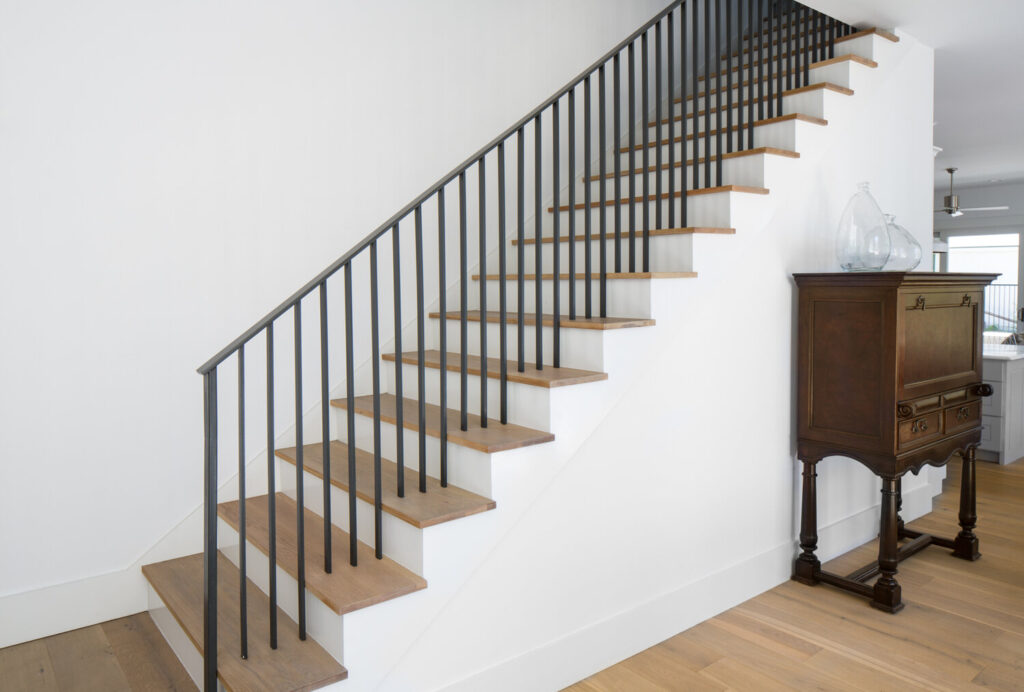How Many Steps Are in a Flight of Stairs?
The number of steps in a flight of stairs can vary depending on the building’s design, the available space, and local building codes. However, there are some general guidelines and common practices when it comes to the number of steps in a typical flight of stairs. In this comprehensive article, we will explore the factors that influence the number of steps, the standard range, and the importance of considering the number of steps in stair design.
Factors Influencing the Number of Steps
Several factors can affect the number of steps in a flight of stairs:
- Building Code Requirements: Local building codes often specify the minimum and maximum number of steps allowed in a flight of stairs, as well as the dimensions of each step. These requirements are in place to ensure safety and accessibility.
- Available Space: The available space for the staircase is a significant factor in determining the number of steps. In buildings with limited space, the number of steps may be reduced to accommodate the available area.
- Step Dimensions: The height and depth of each step, known as the rise and run, respectively, can also influence the total number of steps. Taller steps will result in fewer steps per flight, while shorter steps may allow for more steps.
- Stair Design: The overall design of the staircase, such as whether it is a straight flight, a spiral staircase, or a curved staircase, can impact the number of steps required.
Standard Range of Steps
While the exact number of steps in a flight of stairs can vary, there are some common ranges:
- Residential Stairs: In residential buildings, such as homes and apartments, a typical flight of stairs may have between 10 to 16 steps.
- Commercial Stairs: In commercial buildings, such as offices and retail spaces, the number of steps in a flight of stairs may range from 12 to 20.
- Public Buildings: In public buildings, such as schools, hospitals, and government facilities, the number of steps in a flight of stairs can vary depending on the building’s size and design, but it is often between 16 to 22.
It’s important to note that these ranges are general guidelines, and specific building codes and regulations should always be consulted when designing stairs.
Importance of Considering the Number of Steps
The number of steps in a flight of stairs is an essential factor to consider for several reasons:
- Safety: The number of steps, along with their dimensions and design, can impact the safety of the staircase. Too many steps in a flight can lead to fatigue and increase the risk of falls, while too few steps may cause people to misjudge the distance and trip.
- Accessibility: The number of steps can affect the accessibility of the staircase, particularly for individuals with mobility issues or disabilities. Buildings are often required to have elevators or ramps in addition to stairs to ensure accessibility.
- Aesthetics: The number of steps can also contribute to the overall aesthetic of the staircase. In some cases, the design of the staircase may prioritize aesthetics over the number of steps, leading to unique and visually appealing staircases.
- Functionality: The number of steps can impact the functionality of the staircase, particularly in high-traffic areas. Too many steps in a flight can lead to congestion and slow down traffic flow, while too few steps may require more flights to reach the desired floor.
Calculating the Number of Steps
To calculate the number of steps in a flight of stairs, you can use the following formula:
Where:
- Total Rise: The total vertical distance the stairs need to cover
- Step Rise: The height of each individual step
For example, if the total rise is 120 inches and the step rise is 8 inches, the number of steps would be:
It’s important to note that this calculation is a rough estimate and should be used as a starting point. Building codes and regulations should always be consulted to ensure compliance and safety.
Stair Design Considerations
When designing stairs, it’s essential to consider several factors beyond the number of steps:
- Step Dimensions: The height and depth of each step should be consistent throughout the flight and meet local building code requirements for safety and accessibility.
- Handrails: Handrails should be installed on both sides of the staircase to provide support and prevent falls. The height and design of the handrails should also comply with local building codes.
- Lighting: Adequate lighting should be provided on and around the staircase to ensure visibility and prevent accidents.
- Slip-Resistant Surfaces: The treads of the steps should have a slip-resistant surface to reduce the risk of falls, particularly in wet or icy conditions.
- Landings: Landings should be provided at the top and bottom of the staircase, as well as at any intermediate levels, to provide a resting area and improve safety.
Conclusion
The number of steps in a flight of stairs can vary depending on several factors, including building codes, available space, and stair design. While there are some general guidelines for the standard range of steps, it’s essential to consult local building codes and regulations to ensure compliance and safety. By considering the number of steps and other design factors, architects and builders can create staircases that are both functional and aesthetically pleasing.
FAQ Section
Q1: What is the typical number of steps in a residential flight of stairs?
A1: In residential buildings, a typical flight of stairs may have between 10 to 16 steps.
Q2: How do I calculate the number of steps in a flight of stairs?
A2: To calculate the number of steps, divide the total rise (vertical distance the stairs need to cover) by the step rise (height of each individual step).
Q3: What factors influence the number of steps in a flight of stairs?
A3: The number of steps can be influenced by building code requirements, available space, step dimensions, and stair design.
Q4: Why is the number of steps important in stair design?
A4: The number of steps is important for safety, accessibility, aesthetics, and functionality.
Q5: What is the typical number of steps in a commercial flight of stairs?
A5: In commercial buildings, the number of steps in a flight of stairs may range from 12 to 20.
Q6: Are there any requirements for handrails in stair design?
A6: Yes, handrails should be installed on both sides of the staircase and meet local building code requirements for height and design.
Q7: What is the typical number of steps in a public building flight of stairs?
A7: In public buildings, the number of steps in a flight of stairs can vary depending on the building’s size and design, but it is often between 16 to 22.
Q8: How can the number of steps affect the safety of a staircase?
A8: Too many steps can lead to fatigue and increase the risk of falls, while too few steps may cause people to misjudge the distance and trip.
Q9: What other design factors should be considered when designing stairs?
A9: Other design factors include step dimensions, lighting, slip-resistant surfaces, and landings.
Q10: Where can I find more information about stair design and building codes?
A10: For more detailed information, you can visit the Wikipedia page dedicated to staircases.
Summary Table
| Building Type | Typical Number of Steps |
|---|---|
| Residential | 10 to 16 |
| Commercial | 12 to 20 |
| Public | 16 to 22 |
This comprehensive guide provides an overview of the number of steps in a flight of stairs, the factors that influence this number, and the importance of considering the number of steps in stair design. By understanding the standard ranges and design considerations, architects and builders can create safe, accessible, and aesthetically pleasing staircases that meet the needs of building occupants and comply with local regulations.



